In November 1996, a car travelling near Susurluk, in the Turkish province of Balykesir, left the road at high speed and crashed after colliding with a truck. Three people, Abdullah Catli, Gonca Us (Catli’s girlfriend) and Huseyin Kocadag were apparently killed in the crash and a fourth, Sedat Bucak, survived. The driver of the truck, Hasan Gokce, was found culpable and sentenced to three years in prison.
Abdullah Catli was a wanted drug smuggler, arms dealer and terrorist. Huseyan Kocadeg was a senior Turkish Police official and Turkish counter-intelligence commander and Sedat Bucak a Kurdish warlord and member of the Turkish parliament. Catli was carrying a number of false identification documents, diplomatic credentials (signed by the Turkish Interior Minister Mehmet Agar) and a government weapons permit. The vehicle also contained a substantial amount of U.S. dollars, drugs and government supplied firearms. Why was a wanted terrorist in a car, laden with illegal narcotics, weapons and foreign currency, together with a Police official and a politician? The public demand for answers forced Mehmet Agar to resign shortly after the Susurluk Scandal (Affair) broke.
In 1970 Turkey was revealed as a vital country in the operation of the Gladio ‘strategy of tension.’ With both a Mediterranean and Black Sea coastline, and borders with then Soviet republics of Georgia and Armenia, as well as borders with the Middle East nations of Syria, Iraq and Iran, its geographical strategic value was obvious. It’s a cross road between Europe to the west, Russia to the north, the Caucuses & China to the east and the Middle East to the South. In addition, as a secular country with a predominantly Muslim population, Turkey is a unique NATO member state, whose cultural influences and reach, combined with its geography, made it possibly the key nation in the Gladio strategy.
When the Turkish translation of ‘U.S. Army Field Manual 31-15: Operations Against Irregular Forces’ was disclosed in 1970, along with other documents, it was clear the Turkish ‘contra guerrilla‘ was a major force operating the strategy of tension. This was further corroborated in 1990 by then chief of Turkish special forces General Kimmel Yilmaz who stated the ‘stay behind’ units were under the command of the Turkish special forces and were used to “organize resistance in the event of communist occupation.”
Consequently, following the ‘Susurluk incident,’ three investigations were commissioned. The first, from the Millii Istihbarat Teskilati (MIT – National Intelligence Service,) was widely perceived as a cover up. This led to two further reports. One from Kutlu Savas, the chairman of the Prime Minister’s Inspection Board, contained 12 redacted pages, again fuelling widespread suspicion of state collusion. Eventually a parliamentary investigation commission, headed by Mehmet Elkatmis, published the official 350-page Susurluk Report in April 1997.
In the face of significant public protests by Turkish citizens, disgusted by the level of state corruption and the mendacity of their own security services, the Turkish government was forced to concede the long suspected reality of a Deep State, within its own establishment hierarchy. This parallel government was using terror and extortion as a means of social disorientation, manipulation and control. Taken in combination these reports, official accounts, investigations and court hearings reveal another well documented picture of horrific crimes, perpetrated by elements within the state, against its own people. If you ever want to understand just how deep the ‘rabbit hole’ goes, then researching the Susurluk Scandal would be a good place to start.
At the time of the crash, Catli was listed on Interpol’s most wanted ‘red list’ and was the well-known leader of the ‘Grey Wolves’, a neo-fascist terrorist organisation with close links to the Turkish Mafia. Catli forged close associations with many of the so called Babas (Mafia bosses) including drug lord Abuzer Ugurlu, for whom the Grey Wolves worked as couriers. Catli was among those who routinely smuggled NATO arms and military equipment to the Middle East and Asia bringing narcotics, mainly heroin, on the return routes to Europe, via Turkey. From there it would be distributed to lucrative markets in Western Europe and the United States. This arrangement was extremely profitable for both the Babas and the Grey Wolves.
Italian Judge Carlo Palermo partly uncovered this drug and arms trafficking network during his investigation of Sicilian smuggling routes. He found that large quantities of NATO military hardware, including machine guns, Leopard tanks and U.S. built Cobra assault helicopters, were smuggled into the Middle East via Turkey throughout the 1970s and 80s. Operatives were allegedly allowed to select arms and equipment from NATO stockpiles in Germany, Belgium and elsewhere, later to be exchanged for heroin.
The entirely separate ‘October Surprise’ inquiry in the U.S. in 1993 looked into the alleged deal between senior U.S. Republicans, including George H.W Bush, and Iran, to stop the hostage release of 52 Americans held in Tehran. The Republicans were concerned that Democrat President Jimmy Carter was close to striking a deal with Iran for the negotiated release of the hostages. The Republicans reportedly made arrangements with the Iranians to forestall the deal until after the election. This forced Carter to announce to the U.S. electorate the hostages wouldn’t be released prior to polling day. Many consider his perceived weakness cost him the 1980 election. The alleged deal with Iran was for weapons in exchange for the delayed, post election releases. Ultimately the inquiry exonerated the Republicans from all responsibility. By a stroke of great fortune for the Republicans, the hostages were released on the day of the new Republican President Ronald Reagan’s inauguration.
By 1985, during an apparent arms embargo, there was no doubt at all that Iran were buying weapons from the U.S. (and European arms manufacturers). The Iran Contra Affair, which saw the supply of arms to Iran, (via Israel) was initiated with the exchange of seven hostages held by the Iranian backed, Lebanese Hezbollah. The money raised by the sale of arms was then diverted by the CIA to fund the Nicaraguan Contras, who were created to fight the socialist Sandinista government. However, the evidence presented during the October Surprise inquiry indicated that this probably began at least as early as 1980.
This coincided with the Iran – Iraq war (1980 – 1988) that killed more than a million people. Iraq were also backed by the West as Germany, France, Britain and the U.S. all sold arms to Saddam Hussein. The U.S. also supported his use of chemical weapons against Iranian forces by providing satellite imagery of Iranian troop movements to the dictator. In 1983, following Reagan’s removal of Iraq from the list of alleged state sponsors of terrorism a year earlier, U.S. envoy Donald Rumsfeld (member of the Council on Foreign Relations [’75 – ’77] and regular Bilderberg meeting attendee) visited Iraq for a meeting with Saddam Hussein and his officials. Speaking afterwards Rumsfeld said:
“It struck us as useful to have a relationship, given that we were interested in solving the Mideast problems.”
During the 1993 ‘October Surprise’ inquiry Iranian arms dealer Houshang Lavi testified he had selected spare parts for Hawk anti-aircraft batteries from NATO bases along the Belgian-German border. This corroborated Palermo’s findings which were further supported by the former U.S. secretary of State, Alexander Haig, who stated:
“It wouldn’t be preposterous if a nation, Germany, for example, decided to let some of their NATO stockpiles be diverted to Iran.”
In Turkey the Grey Wolves had first formed as the paramilitary youth wing of the Turkish National Movement Party (MHP) led by Colonel Alpaslan Turkes. While not particularly pro Western, the MHP promoted a fanatical pan Turkish ideology which included unification claims upon Soviet Union territories inhabited by Turkic speaking Muslim communities, such as Uzbekistan, Kazakhstan and Azerbaijan. This made them an appealing prospective partner to the Deep State controllers of Gladio. They also had close ties with the CIA backed Anti-Bolshevik Bloc of Nations (ABN) which was originally formed by the so called ‘ace of spies,’ British agent Sidney Reilly.
Alpaslan Turkes, along with Danis Karabelen, first received support from the CIA in 1948 as part a group of sixteen Turkish soldiers trained in the U.S. in ‘special warfare’ techniques. In 1952 then Brigadier General Danis Karabelen, with his colleague Colonel Turkes, established the Seferberlik Taktik Kurulu (STK – Tactical Mobilisation Group). Its headquarters were the CIA owned American Yardim Heyeti (American Aid Delegation – JUSMATT) building in Ankora. In 1965 the STK were incorporated into the newly formed Ozel Harp Dairesi (OHD – Special Warfare Department.) Speaking in 1996, shortly after Catli’s death, General Turkes said, “Çatlı has co-operated in the frame of a secret service working for the well-being of the state.” Most Turks were appalled by his comments.
The intelligence and security service structure in Turkey had always been complex, with many competing strands of military and civilian services. However, the MIT were the largest organisation, and they received the bulk of CIA funding. Effectively a subsidiary of the CIA since its inception in 1965, it was customarily directed by a Special Warfare Department representative with direct oversight of the contra-guerrilla. Former CIA agent Philip Agee explained the relationship between the MIT and the CIA:
“The CIA had been in contact with the MIT for years. The CIA took care of the training, the development and the equipment of this organisation.”
This was further corroborated by the deputy director of the MIT, Sabahattin Savasman, who expanded on the CIA control of the MIT in his statement given in 1977.
“The CIA has a delegation of at least 20 people who co-operate in the MIT with the CIA and who occupy high positions inside the MIT. They supply information, contacts and they participate in operations at home and collectively in operations abroad…. All technical equipment is supplied by the CIA. A lot of personnel was trained by the Americans in courses abroad, the buildings were constructed by the CIA, the instructors were supplied by the CIA…. The employees have been working for years as CIA agents, for the benefit of the American secret service, it takes over its tasks without pay in operations at home and abroad.”
While at least attempting to maintain plausible deniability, the CIA’s links to the contra-guerilla Gladios were evident even before their eventual exposure by the Susurluk Scandal. When Operation Gladio was formally disclosed in 1990, Turkish authorities initially denied the existence of the contra-guerrilla, despite their presence being fairly common public knowledge. However, when former CIA Chief William Colby revealed that “there is also such an organisation in Turkey,” General Dogan Beyazit, President of the Harekat Dairesi (Operation Department) and General Kemal Yilmaz, commander of the Ozel Kuvvetler (Special Forces) were forced to issue the joint statement conceding the fact.
The Grey Wolves were trained, armed and protected by the Turkish special forces led contra-guerrilla. The contra-guerrilla were trained in the USA During the 1970s, 80s and 90s. They also received training in the School of the America’s in Panama, which was attached to the U.S. base Southern Comfort. The Police Academy near Washington and the Schongau and Oberammergau bases in Germany also provided instruction for the Turkish Gladio forces.
Once returned to Turkey, together with the Grey Wolves and others, they participated in horrendous atrocities including decapitations, bombings, mass shootings, assassinations and extortion. Their targets were often left-wing and liberal activists, intellectuals, labour organizers, ethnic Kurds, officials and journalists. However, it was the widespread use of terror which was the mainstay of their operations to disorientate the Turkish people, allowing their political leaders to offer the ‘right solutions.’ For example, in 1978 the Grey Wolves stormed the Alevi quarter in the Turkish city of Kahramanmaras in what came to be known as the Maras Massacre. They destroyed hundreds of Alevi businesses, ransacked and burned Alevi homes and murdered more than 100 Turkish Alevis. Thousands of Turkish citizens died at their hands during the period.

[The Contra Guerilla and Grey Wolves were trained by the CIA in the School of the America’s in Panama.]
By 1978 the former street criminal and violent enforcer Catli had become the Grey Wolves second in command and was well on his way to becoming a Baba himself. He was a cell member with Mehmet Ali Agca. Agca was the gunman responsible for the barely failed assassination attempt upon Pope John Paul II in 1981. Catli helped Agca escape from jail after his conviction for the murder of a Turkish newspaper editor. He acted as Agca’s tactical coordinator, keeping Agca out of the clutches of police for months, as he evaded capture by staying on the move in Europe, before eventually shooting the Pope.
In 1984, Catli was arrested in Paris for drug smuggling and was sentenced to seven years imprisonment and was then extradition to Switzerland in 1988 to face similar charges. In 1989, while in a Swiss maximum security prison, in a scene reminiscent of a Bond film, Catli escaped with the assistance of a helicopter. Assuming his position on the Interpol ‘red list,’ Catli was then granted British citizenship and stayed in the UK for a year or so before flying to the U.S., where he received a ‘green card’ (permanent residency.)
Catli had long been a frequent visitor to the States. For example, in 1982 he flew into Miami accompanied by close Licio Gelli associate Stefano delle Chiale, founder of the Italian neo-Nazi group ‘Avanguardia Nazionale.’ Among his many crimes, Chiale had worked with Klaus Barbie to run Chilean death squads under the direction of Chilean Interior Minister Luis Arce Gómez, with the support of the CIA.
A notorious Gladio operative, Stafano delle Chiale was part of the Aginter Press in Portugal and a member of the Ordine Nuevo with Vincenso Vinciguerra. Like Vinciguerra, Chiale was also ordered to testify before the 1997 Pellegrino Commission into the Italian Gladio operation. However, unlike Vinciguerra, despite being tried for his alleged involvement in numerous terrorist attacks, including the Bologna Massacre, he was consistently acquitted on appeal. CIA document released in 2008 show that Chiale was a valuable Gladio agent who became deeply embedded within multiple South American state intelligence agencies as part of CIA run efforts to combat ‘left wing activists.’
By 1991, using Chicago as a base of operations, Catli then spent the next five years launching a series of operations in the Caucasus, notably Azerbaijan. Why was Catli, a Turkish neo-fascist, an international arms/drug dealer and terrorist, flying between Chicago and the Caucasus, probably using the various diplomatic passports found in his possession, to commit further terrorist and criminal acts?
We ‘know,’ following the collapse of the Soviet Union, foreign policy ‘think tanks’ like the CFR, the Trilateral Commission and PNAC were concerned that the U.S. should remain the ‘unipower’ and use its military dominance to establish a single, global economic and political system; we know the strategy of tension, exposed with Operation Gladio, employed false flag and sponsored acts of terrorism to shape public opinion and provide policy justifications; we know Central Eurasia was seen as the key strategic region, and we know America’s first response to 9/11 was to invade Afghanistan (with British and Canadian assistance.) The U.S. and its Western allies established a military presence, as a direct result of 9/11, that remains to this day.
We also know that Catli was a Gladio operative ostensibly working for the Turkish contra-guerrilla under the control of the CIA and Turkish Special Forces. We know that Turkey, like its European neighbours, is also a NATO member state. Similarly, we can be certain that Catli was a frequent flyer between Chicago and various countries in the Caucasus (other than Turkey) during the early 90s. It is in this context that we can uncover what he was doing there, and for whom.
Following the fall of the Soviet Empire, its former republic of Azerbaijan became an immediate target for the Western globalists. Its massive oil and gas reserves and its strategic value, as a potential base of operations, were enticing. The problem was the elected President, Heydar Aliyev, was still close to his former Russian backers who retained control of the oil fields and much of the lucrative drugs trade. Initially the U.S. attempted to bribe Aliyev’s government into cooperation. Their objective, other than strategic control, was to establish the Baku-Tbilisi-Ceyhan oil pipeline between the Azerbaijan capital Baku and the Turkish Mediterranean port of Ceyhan. The Turkish Babas established a number of high roller casinos in the country. These were largely run by Omar Lutfu Topal. Topal had been arrested in Antwerp in 1978 with 6 Kilos of heroin in his possession. It later emerged the heroin was destined for the U.S. as part of a Gladio operation for which Topal was an operative.
Heydar Aliyev’s son Ilham was a compulsive gambler, and the casinos were the centre of an entrapment operation to draw the Aliyev’s into the CIA’s clutches. However, things weren’t progressing as they wished so, in 1995, Abdullah Catli was dispatched to Azerbaijan to coordinate a presidential assassination and coup attempt. It was a botched operation, perpetrated by a unit of the Azerbaijani special forces. Eventually their encampment was stormed by the Azerbaijani army resulting in the death of their leader, Colonel Rovshan Javadov. Shortly thereafter, Catli killed Topal as the whole affair disintegrated into a fiasco that only served to further expose the use of Turkish neo-fascist terrorists by their Gladio handlers.
By the time of the 1996 Susurluk Scandal, the first phase of Gladio appeared to have largely run its course. The use of right wing terrorists was thoroughly exposed. However, rather than abandon the Gladio operation, its Western Deep State operators had already set their sights on a far more powerful weapon. The focus apparently shifted to, what we might call, ‘Gladio B,’ using Islamist extremists as the proxies for an expanded, global ‘strategy of tension’ and much more.
There is no official operation called ‘Gladio B.’ We are simply using the term here, for want of a better expression, to describe the ongoing use of the ‘strategy of tension.’
We can’t know precisely when the shift to ‘Gladio B’ started. However, we can identify when heavily infiltrated Islamist groups started to take a more prominent role in Western society. Susurluk appeared to mark a watershed, precipitating the shift in focus. This is corroborated by contemporaneous events and a wealth of documentary evidence. It is further substantiated by the investigations of journalists like Nafeez Ahmed who has ‘joined the dots’ to form a cohesive, evidence based, exposé for our consideration.
Unlike the bulk of the MSM, if we bother to consider the evidence, it is clear that it was around 1996 that groups like the al Qaeda linked Al Muhajiroun started to appear more frequently in the mainstream political consciousness. Similarly, 1996 was the year we were told about the UK’s first ‘homegrown’ Islamist suicide bomber Khalid Shahid. This wass no accident it was part of the build up to the planned ‘war on terror’ by hidden elements within Western governments and simply a continuation of policy with a shift of focus towards supporting Islamists like Ayman al Zawahiri instead of fascists like Catli. By studiously avoiding any discussion at all about Gladio or the Susurluk Scandal, and by disregarding history, the MSM were able to promote the narrative of ‘extremists in our midsts’ without even a hint of irony.

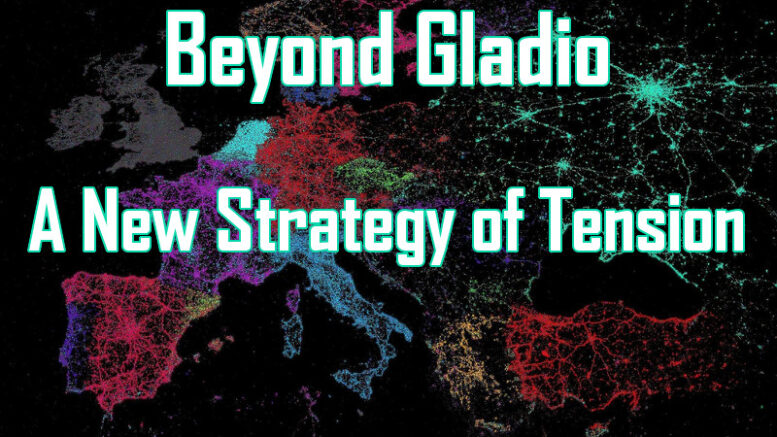
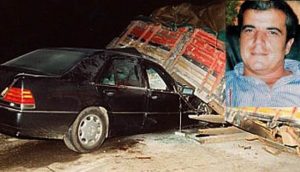
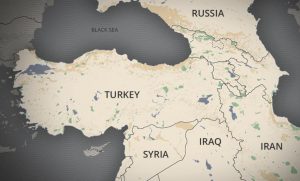


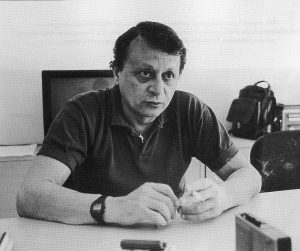
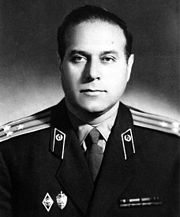

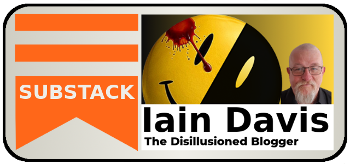



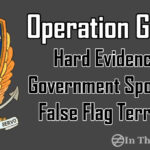
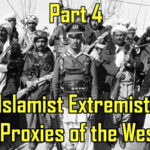
Hi Iain, I tried to set up a small, recurring monthly donation, but it didn’t work because the payment processor would not accept an Irish postal code! Couldn’t make a one time donation either for same reason. I could subscribe via Substack but it has become very annoying and I’d rather just come straight to your site. Best of luck.
That’s very kind Polli. Sorry to hear you’ve had problems. Other than substack you can voluntrailly support my work by donating here: – https://iaindavis.com/donorsupport/
Unfortunately, I have no other means of accepting donations. But thank you so much for the thought.